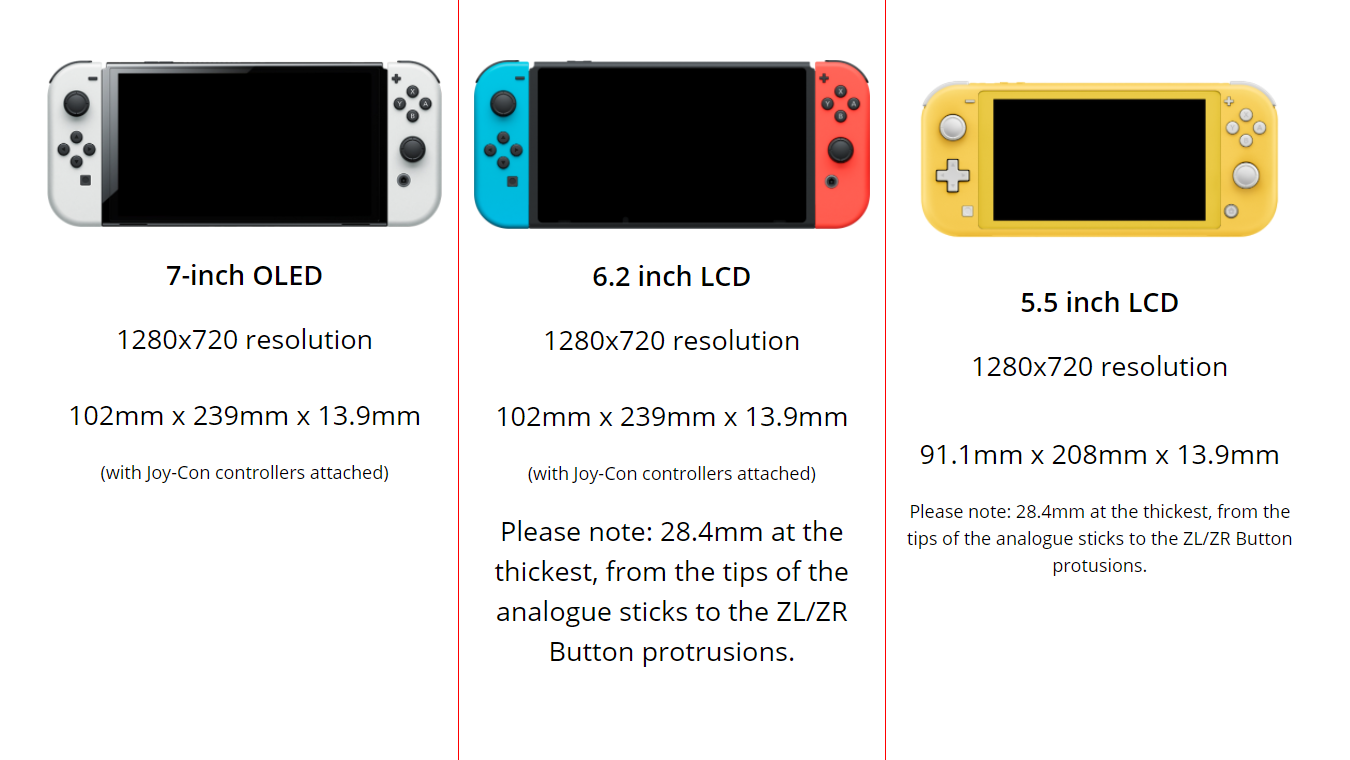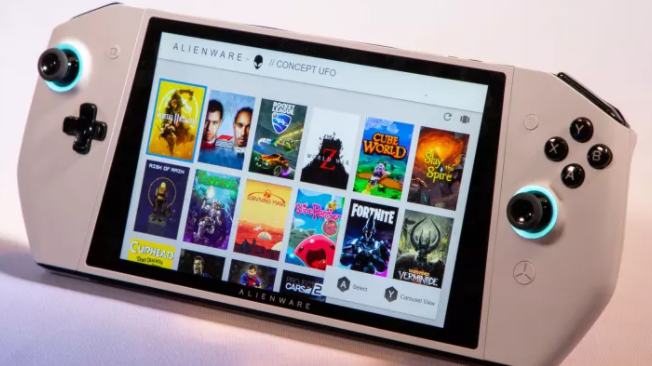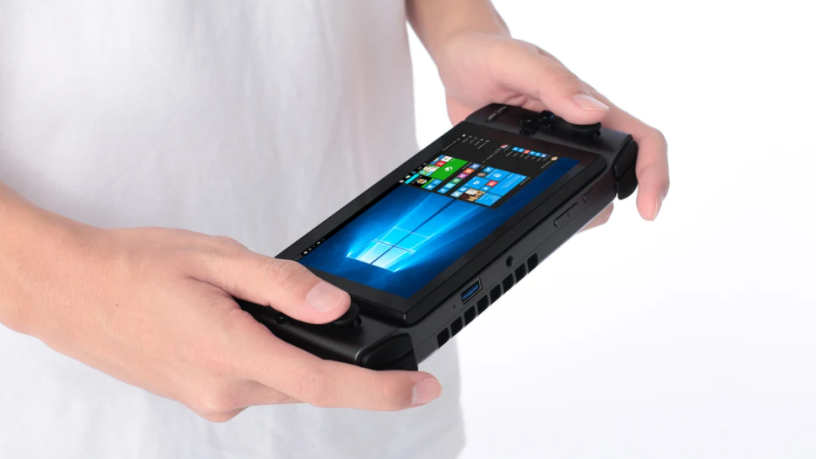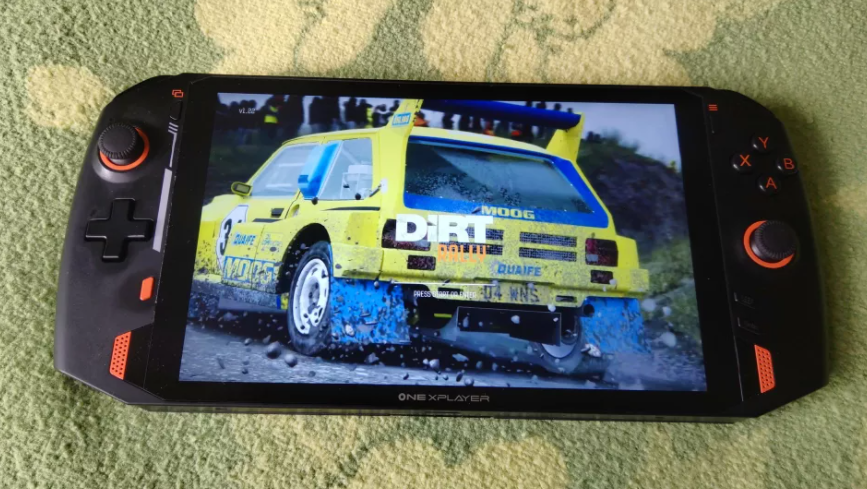Nintendo's OLED Switch is going to force handheld PCs makers to step up their game
Handheld gaming PCs manufacturers should start taking notes.
The Nintendo Switch is getting an upgrade, according to a series of surprise tweets from the Nintendo Twitter account. The Nintendo Switch OLED model will feature a colorful 7-inch OLED display and a host of new (though small) hardware updates like bigger storage (64GB), an adjustable and wider kickstand, and even a built-in Ethernet port (a first for a Nintendo console). It leaves us thinking anyone competing in the handheld gaming space may need to rethink their plans and take some cues from what's made the Switch so successful for the past four years.

We have seen a couple of earnest attempts at shrinking gaming PCs down to handheld proportions to achieve gaming on the go, like the GDP Win 3 handheld gaming console, the OneNetbook OneXplayer, and Alienware's Concept UFO. While the notion of being able to play anything in your Steam library on the bus or train is super appealing. The balancing act of playing those games at an acceptable frame rate, decent enough resolution while keeping the battery alive long enough to actually enjoy those same games is a challenge we've yet to see one really meet.
When I look at something like the upcoming Smach Z handhelds, which have 1080p displays and an impressive spec list, I fantasize about how awesome it would be to dump all my favorite ROMs onto it and treat it like the ultimate gaming emulator, with the addition of games from Game Pass or PlayStation Now.
But it's a very pricey way to do that compared to a desktop PC, and none of them seem able to match the Switch's hardware quality or aesthetics (a lot of handheld PCs are sadly pretty uggo). The OLED model seems like it'll only widen the gap.



At $350, nearly a third of the cost of these systems, the Switch OLED is giving you a bigger (and likely more vivid) display. Yeah, it's not the 4K Switch Pro fans have been dreaming up for years, and yes, the OLED Switch still only plays games at 720p in handheld mode and isn't offering any performance boosts. But I can't overstate how great OLED displays are. OLED displays have better viewing angles, deeper blacks, and excellent color and contrast. Depending on what they're displaying, OLEDs can be more power-efficient, too.
A new Switch with a bigger screen keeping the same battery life (according to Nintendo, that is) and only 20 grams heavier is an impressive feat. Overall the Switch is such a nice system that it's easy to forgive its drawbacks. The Switch OLED will still run into the same problem of game performance; outside of a few notable exceptions, it's not really known for high frame rates, but more as a way to play Super Mario Odyssey anywhere you want. And the lack of some features like Bluetooth audio (still!), which handheld PCs have offered for awhile, is a shame.
Whenever we come across a handheld PC that uses a kitchen sink approach to features to supposedly rival the Nintendo Switch, we end up telling ourselves how much better the Switch would be with even most minor upgrades to its screen and power. The Switch OLED seems to be just that, even if it didn't get the processor bump we hoped for. But that new screen paired with such an easy-to-use interface (and, of course, Nintendo games) still makes the Switch the go-to handheld experience.
The biggest gaming news, reviews and hardware deals
Keep up to date with the most important stories and the best deals, as picked by the PC Gamer team.
Handheld gaming PCs need to decide if they want to be the affordable Switch alternative that'll play all your favorite indie games on a long battery, or a teeny graphical powerhouse that'll give your gaming rig a run for its money. They're just probably never going to be both.

Jorge is a hardware writer from the enchanted lands of New Jersey. When he's not filling the office with the smell of Pop-Tarts, he's reviewing all sorts of gaming hardware, from laptops with the latest mobile GPUs to gaming chairs with built-in back massagers. He's been covering games and tech for over ten years and has written for Dualshockers, WCCFtech, Tom's Guide, and a bunch of other places on the world wide web.

